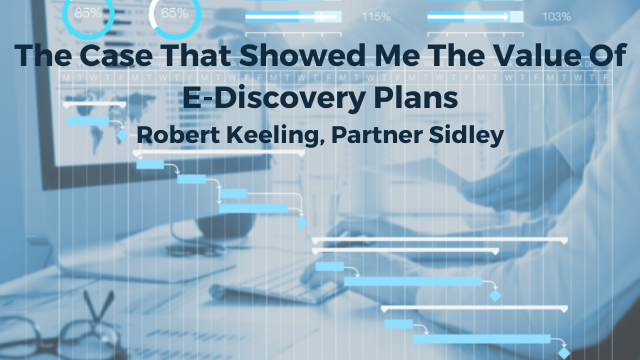
(Originally published by Law360, Portfolio Media, June 15, 2022, 3:06 PM EDT)
In October 2016, AT&T Inc. announced its plan to merge with entertainment company Time Warner Inc., a historic $85 billion deal that was widely publicized and combined two historic companies.
During the final days before the announcement of the merger agreement, my own family underwent an equally historic — at least to us — although less publicized transformation with the birth of my youngest son.

At that point, I couldn’t have known that my new son would be a chubby-faced, 20- month-old toddler headed off to preschool before AT&T was able to finalize the transaction four years ago this month.
The AT&T-Time Warner deal was subject to the requirements of the Hart-Scott-Rodino, or HSR, Act a federal antitrust law that requires companies to provide the government with advanced notice of deals exceeding a certain dollar amount. Pursuant to the HSR, the U.S. Department of Justice issued what is known as a second request, which is similar to a large document request in civil litigation.
The DOJ later filed a civil antitrust lawsuit in the U.S. District Court for the District of Columbia in November 2017, in an attempt to block the merger. The DOJ claimed that the transaction would reduce competition and harm consumers by resulting in higher prices for access to a broad range of television programming. A six-week trial followed.
The parties achieved herculean feats during that time.
U.S. District Judge Richard Leon
In June 2018, U.S. District Judge Richard Leon ruled in AT&T’s favor, holding that the deal was legal and the DOJ had failed to prove it would substantially lessen competition in the industry or hurt consumers. Significantly, the court ruled that the merger could go through with no restrictions, and the deal closed just days later.
Despite the fact that the deal had already formally closed a month earlier, the DOJ appealed the district court’s decision to the U.S. Court of Appeals for the D.C. Circuit. A unanimous appellate panel upheld the ruling in February 2019, resulting in a complete win for AT&T through all phases of the government’s challenge.
I helped lead discovery for AT&T during the second request and the ensuing litigation. I then helped to support the AT&T trial team during the trial. Together, the AT&T-Time Warner investigation and trial constituted one of the most challenging and memorable experiences in my career.
To me, the government investigation, litigation and appeal illustrated many things, one of which was the importance of having a strategic e-discovery plan in place.
E-Discovery Played a Central Role in AT&T’s Complete Win
Successful execution of a strategic and sound e-discovery plan was a significant part of AT&T’s response to the government’s investigation, the trial of the government’s challenge to the merger and the government’s appeal. This was the first time in more than four decades that the government litigated to judgment a case challenging a vertical merger.
As a dispute over the merger of two iconic American companies, the matter was one of the most prominent antitrust cases in recent memory. The trial and appeal were widely covered by the media and closely followed by Wall Street.
Because it is so rare for the government to take a vertical merger case to trial, it presented an important test case for the types of factual evidence the government needs to present in the digital era to meet its burden of showing that a merger is anti-competitive.
Although it is common for antitrust matters to involve voluminous amounts of data, the size of the companies, the high-profile nature of the case and the government’s decision to fight the merger resulted in data collection and production on an extraordinary scale. The e-discovery statistics in this case were staggering.
AT&T produced millions of documents and logged thousands and thousands of documents on a privilege log in a short amount of time. Achieving these results required diligent oversight of many attorneys across multiple firms and contract vendors.
Moreover, the time frame for marshaling all of this data and responding to the DOJ’s discovery requests was extremely tight. For example, during the litigation, the judge set trial only four months after the government filed suit, leaving only about 90 days for AT&T to respond to discovery. During that phase of the matter alone, AT&T reviewed and produced more than 1 million documents.
In describing the discovery process, Judge Leon wrote: “The parties achieved herculean feats during that time.”
Reflections on AT&T’s Successful E-Discovery Plan
A critical part of AT&T’s complete victory in defense of its merger with Time Warner was a strategic and well-executed e-discovery plan.
Documentary evidence was at the heart of the case. AT&T was able to respond to the DOJ’s requests and meet discovery deadlines during trial with remarkable agility because of the preparation and time that had been put into establishing effective processes and workflows well before any discovery requests had been made.
As such, when those requests came in, AT&T was in a position to negotiate discovery protocols, make substantial productions quickly, protect its privileged communications, and mitigate potential DOJ challenges to its production.
The following highlights some of the most effective strategies that were employed, as well as some lessons learned during the course of discovery in this matter.
1. Get an early and organized start.
Particularly where the volume of data is expected to be large and the time to respond is limited, it is critical that companies and outside counsel get an early and organized start in planning their response to a potential government investigation, second request and/or litigation.
In terms of the review infrastructure, this includes identifying an electronically stored information vendor, hard copy document vendor, contract attorney vendors and any other third-party discovery vendors that might be needed early in the process. Taking this step will allow for a more efficient ramp- up during the data collection and review processes.
Efficient coordination and communication with the various discovery vendors working on the matter also is important and can be accomplished by encouraging vendors to have a small, dedicated team of individuals to respond to and track all client and outside counsel requests.
Establishing an organized process early on will also help facilitate the efficiency and speed with which counsel can conduct important custodial interviews. With this information, counsel will be better prepared for initial negotiations with the DOJ related to issues such as the custodian list.
2. Employ predictive coding for more than just responsiveness review.
The use of predictive coding, such as technology-assisted review has become widely accepted and, indeed, may be a necessity in large document productions such as those AT&T made in response to the DOJ’s second request and the litigation related to the Time Warner merger.
Effective use of predictive coding can lead to significant time and cost savings. In the AT&T matter, millions of documents were able to be excluded from review because they fell below the predictive coding cutoff score, resulting in tremendous savings.
While most commonly used as a means to identify responsiveness in a data set, predictive coding can also be used to increase efficiency and streamline other review workflows.
For example, our e-discovery team was able to effectively identify privileged documents using technology-assisted review that were not otherwise flagged by privilege search terms. This process protected these privileged documents from production without the time and cost associated with manual review.
Although predictive coding should be employed whenever possible to maximize review efficiencies, counsel should be prepared with an alternative review strategy based on search terms, in the event that certain predictive coding protocols cannot be negotiated.
For example, in some cases, the DOJ may require a company to share the null set for review as a means of validating the model, or may insist on limited manual review of the responsive set of documents, as coded by the model.
In these instances, it is important that counsel have an alternative strategic plan and can pivot quickly to implement it if necessary.
3. Consider the benefits of a multicity or remote contract attorney review.
In any large review, outside counsel will likely need to engage contract attorneys to conduct a first level of review and to work on specialized workflows — the volume of data simply demands it. In the AT&T matter, where the data set was in the millions, counsel coordinated a multicity document review, which enabled an initial review in a short time frame.
Spreading the contract attorney review between multiple cities had additional benefits beyond simply getting through a higher volume of data. It allowed counsel to be more selective in hiring more experienced contract attorneys, provided cost savings by hiring contract attorneys from secondary markets, and increased counsel’s ability to provide meaningful supervision.
Companies also realize these benefits from a remote review, where the contract attorneys are spread around the entire country.
Additional recommendations related to coordination of contract attorney teams include:
- Maintaining clear and regular communication among all firms and the in-house discovery team related to the logistics of the review;
- Identifying contract attorney reviewers who require supplemental training or release; and
- Ensuring contract attorneys and outside counsel who are involved in specialized workflows havethe appropriate training for that specialized workflow.
4. Implement specialized workflows for privilege review and logging.
One of the more onerous tasks associated with any production, but especially an extraordinarily large production, is the privilege review and privilege logging process. This is especially true in the context of a second request because the DOJ may challenge broad categories of documents that appear on a privilege log.
As explained above, in appropriate circumstances, using predictive coding is one way to alleviate some of the manual review burden in conducting a privilege review. Counsel should also implement specialized, quality control work streams designed to identify potentially privileged material, such as a review of documents sent to the company’s board of directors, documents that hit on priority privilege search terms or a quality control review of hard copy documents from certain key custodians.
From a communications standpoint, outside counsel should provide the client with frequent updates about the volume of privilege documents and categories of documents marked privileged. It also is important to establish a privilege protocol early and to communicate any updates to the privilege criteria in real time to the review teams.
These efforts will help ensure consistency among privilege calls, avoid duplicative work, and ensure outside counsel’s privilege calls are not improperly overturned by contract attorney reviewers.
Implementing some or all of these recommended privilege review practices often results in a smaller percentage of documents withheld and logged, which should provide a more robust defense of the privilege log against any challenges.
In addition, outside counsel should consider establishing and communicating clear guidance for writing defensible privilege log entries and conduct a quality control review of the log to correct entries that do not provide sufficient detail to defend the privilege call.
While managing a document production of the magnitude presented by the AT&T-Time Warner matter will inevitably present e-discovery challenges, following some or all of these lessons learned may help to address those challenges and equip outside counsel with the processes and workflows needed to efficiently deliver a high-quality production.
Disclosure: Keeling led discovery for AT&T Inc. in its acquisition of Time Warner Inc.
The opinions expressed are those of the author(s) and do not necessarily reflect the views of the firm, its clients, or Portfolio Media Inc., or any of its or their respective affiliates. This article is for general information purposes and is not intended to be and should not be taken as legal advice.


